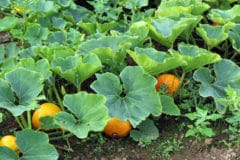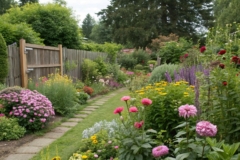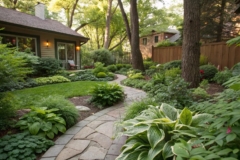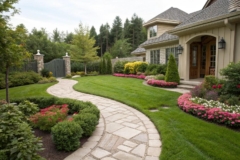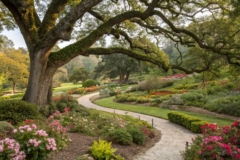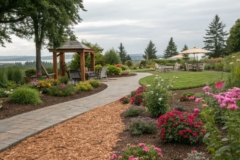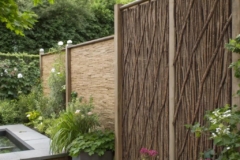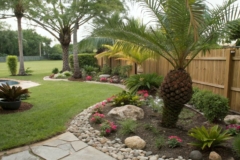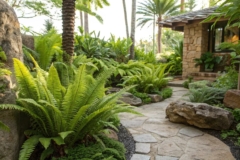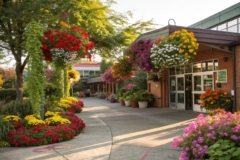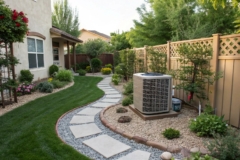1. Design with Curved Paths
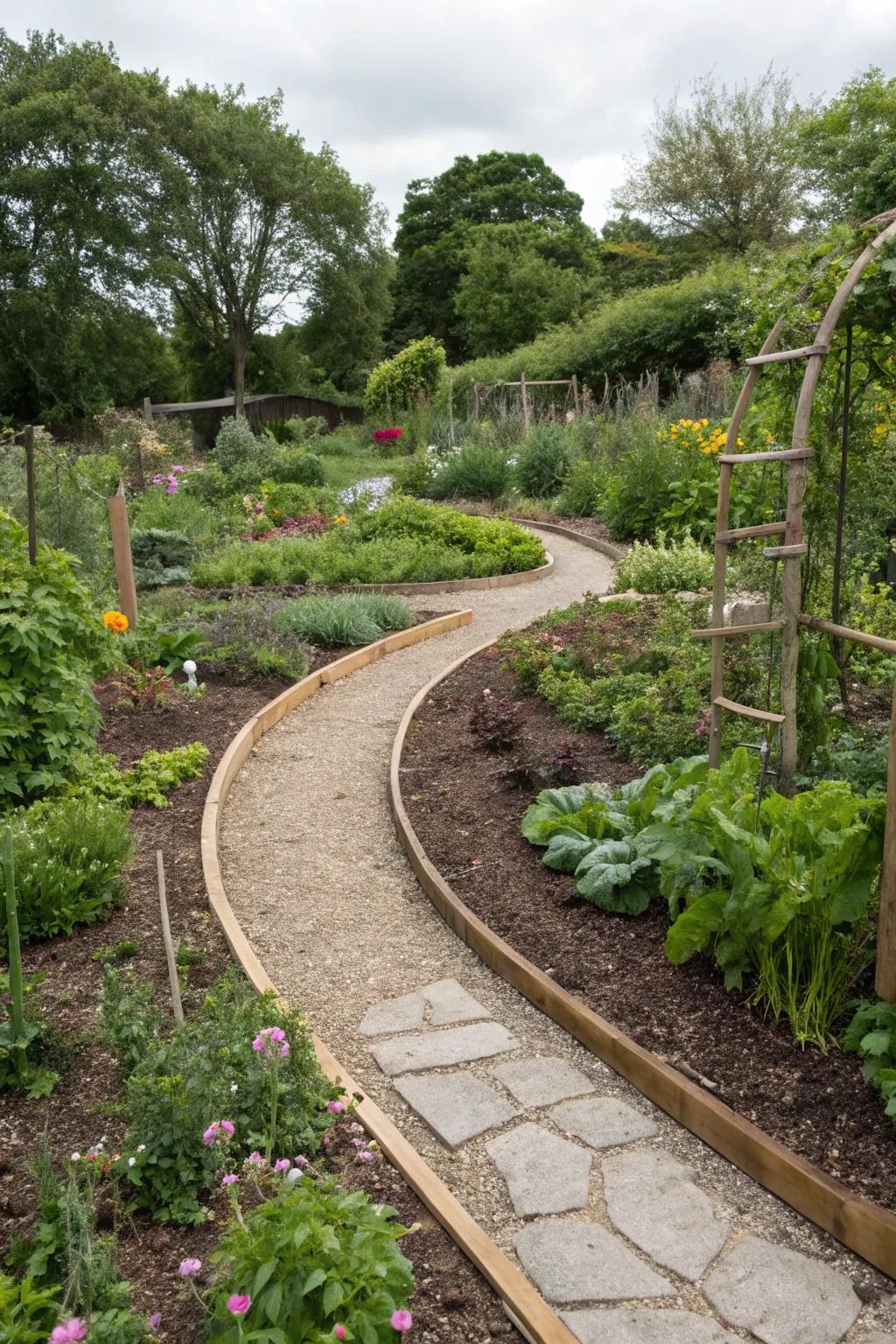
Curved paths not only add a whimsical touch but also guide visitors through your garden’s best features. I’ve found that winding paths lined with mulched beds create a natural flow in my landscape.
A few things you might like:
- Garden Path Pavers: Enhance your garden’s charm with durable pavers, perfect for creating curved, inviting paths.
- Landscape Edging: Define your garden paths with flexible edging, ensuring a neat and well-organized landscape.
- Organic Mulch: Elevate your garden design by using organic mulch for a natural and healthy landscape.
2. Feature a Water Element
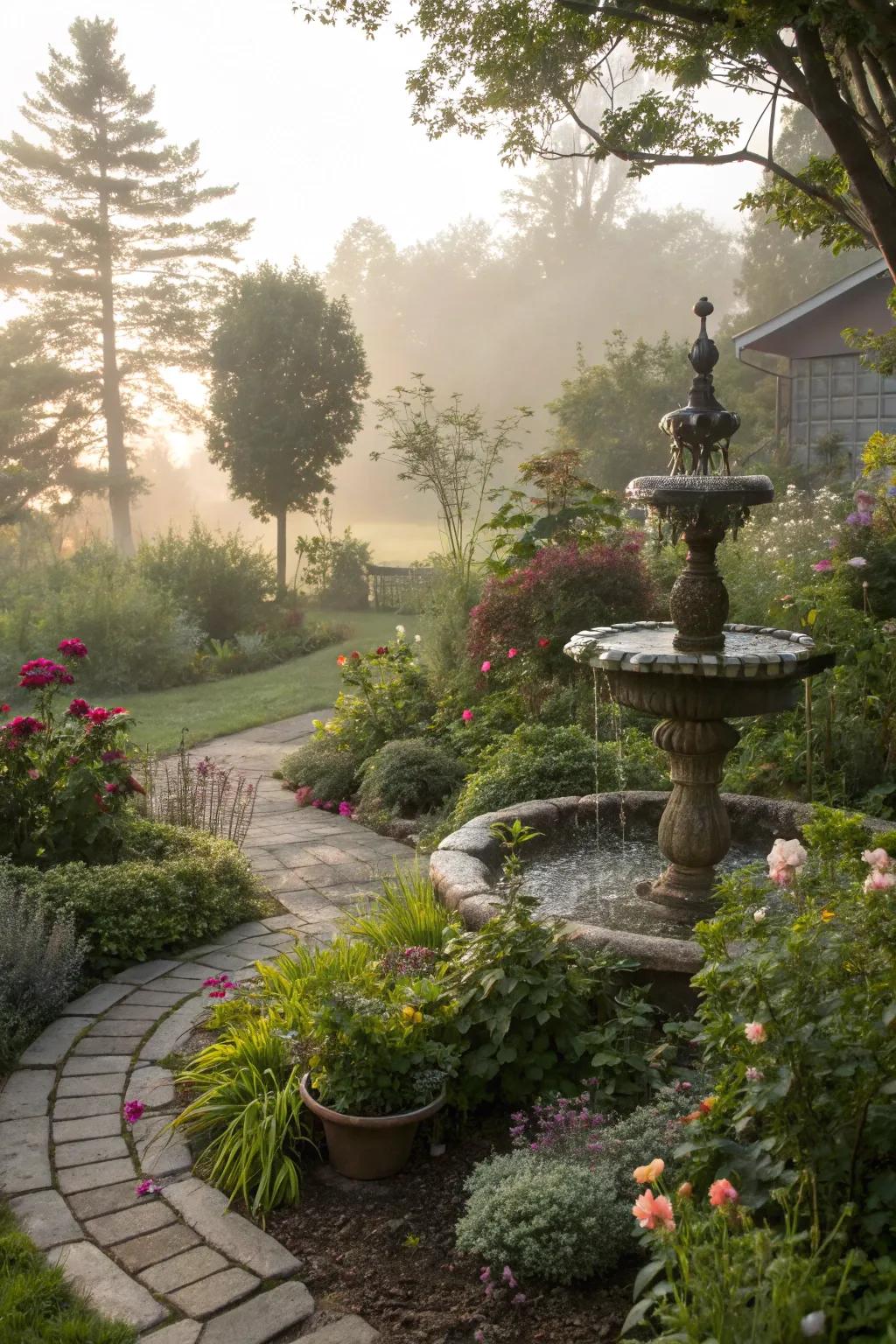
A small fountain or pond can add tranquility and a soothing sound to your garden. In my space, a simple water feature attracts birds and provides a peaceful backdrop.
A few relevant products:
- Outdoor Garden Fountain: Enhance your garden’s ambiance with this elegant fountain, attracting birds and adding serenity.
- Solar-Powered Water Pump Kit: Create a sustainable water feature with this solar pump kit. Perfect for ponds and fountains.
- Resin Bird Bath: Invite feathered friends with this charming bird bath, adding life and movement to your space.
3. Opt for Colorful Foliage
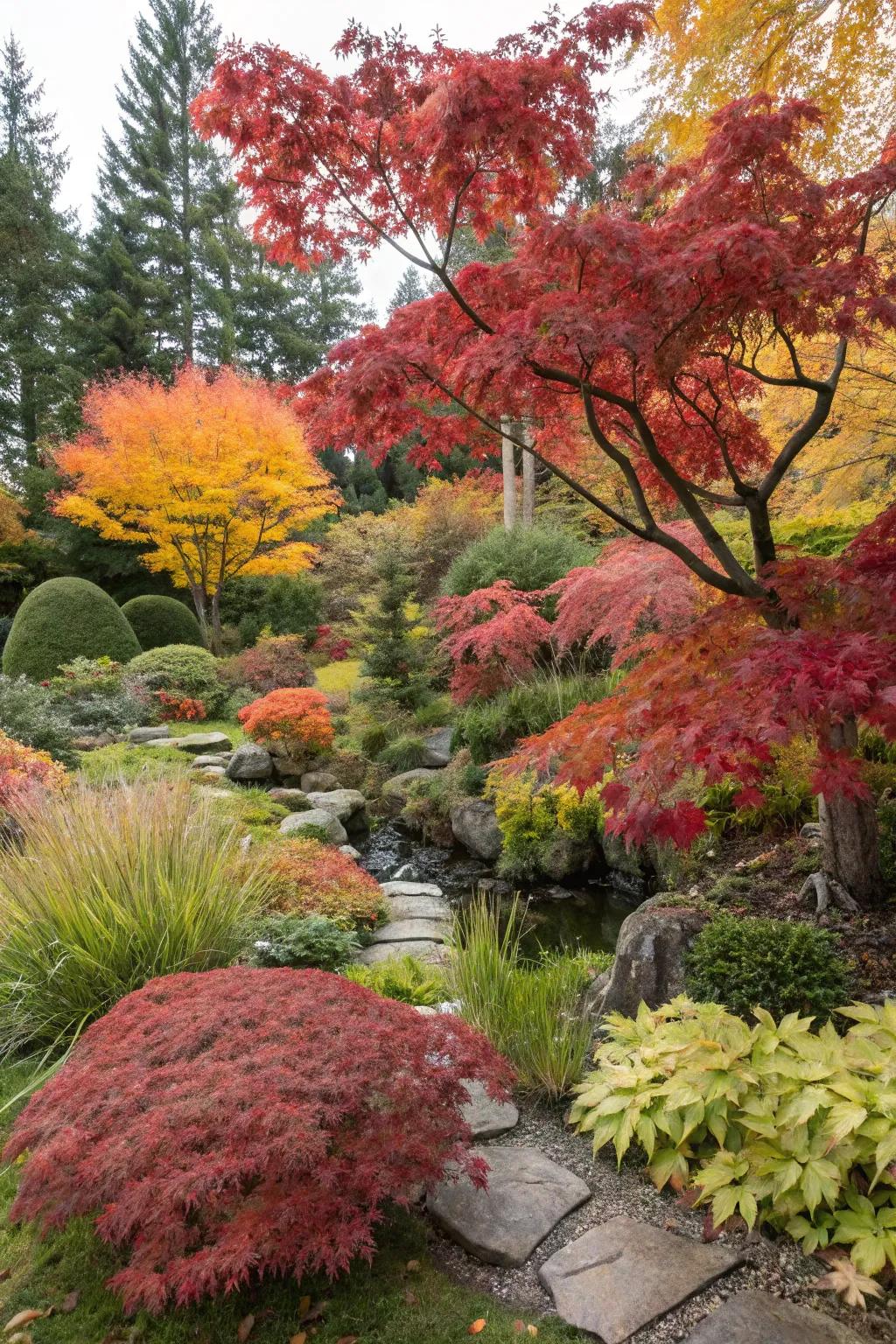
Incorporate plants with colorful foliage like Japanese maple for year-round interest. My crimson queen maple is a showstopper no matter the season, offering a bold splash of color.
You might like:
- Outdoor Japanese Maple Tree: Transform your garden with a Japanese maple, offering vibrant colors throughout all seasons.
- Garden Soil for Acid-Loving Plants: Ensure your Japanese maple thrives with nutrient-rich soil perfect for acid-loving plants.
- Color-Enhancing Plant Fertilizer: Boost foliage color with a specialized fertilizer designed to enhance vibrant plant hues.
4. Layer Plants for Depth
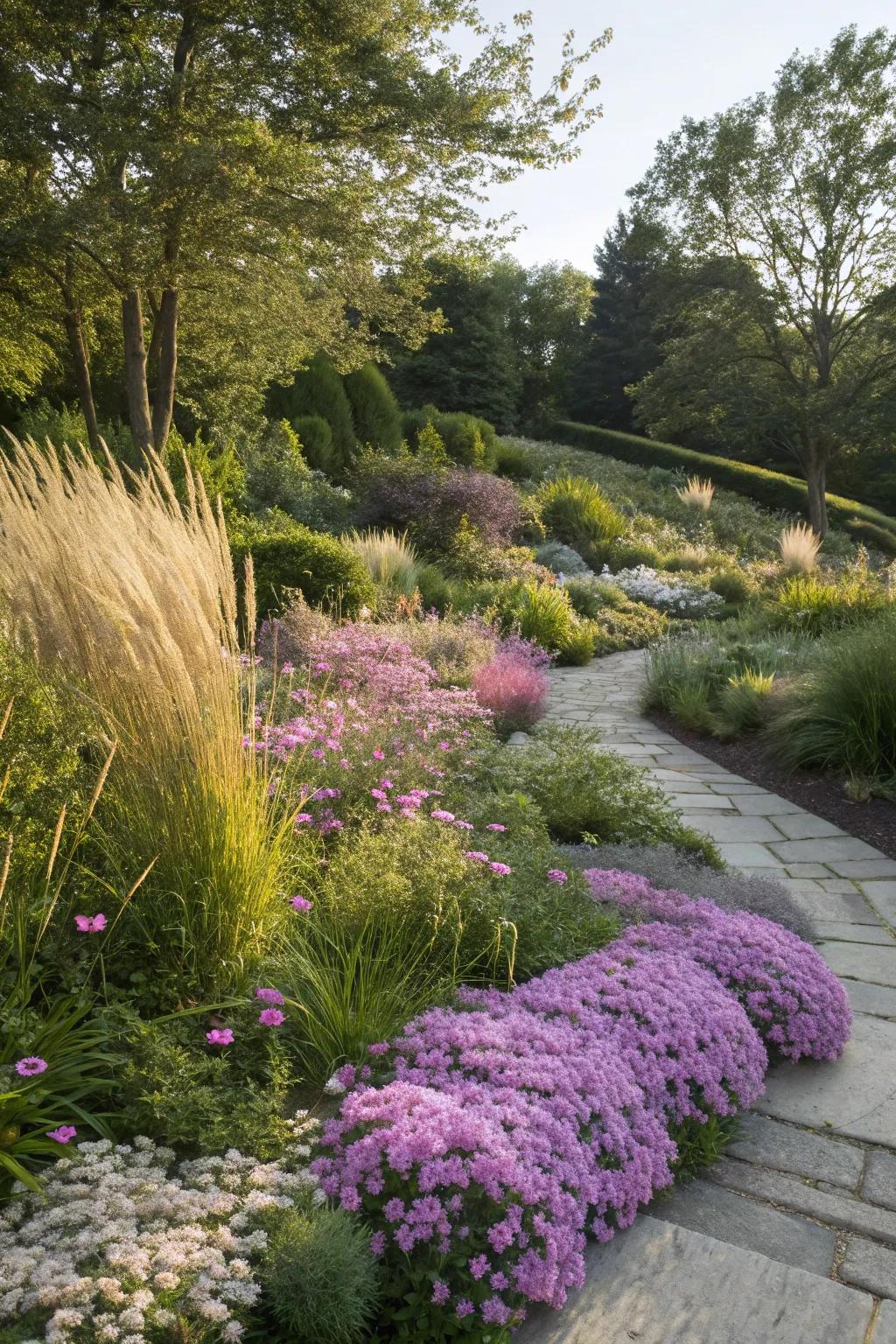
Combine plants of varying heights like tall grasses and creeping phlox for a lush, layered effect. In my garden, this technique adds depth and texture, drawing visitors in for a closer look.
Consider these options:
- Tall Ornamental Grasses Seeds: Enhance garden height and elegance with these easy-to-grow ornamental grass seeds.
- Creeping Phlox Ground Cover Plants: Add vibrant color and full ground cover with these beautiful creeping phlox plants.
- Garden Soil Mix for Perennials: Ensure optimal growth for perennials with a nutrient-rich garden soil mix.
5. Plant a Succulent Haven
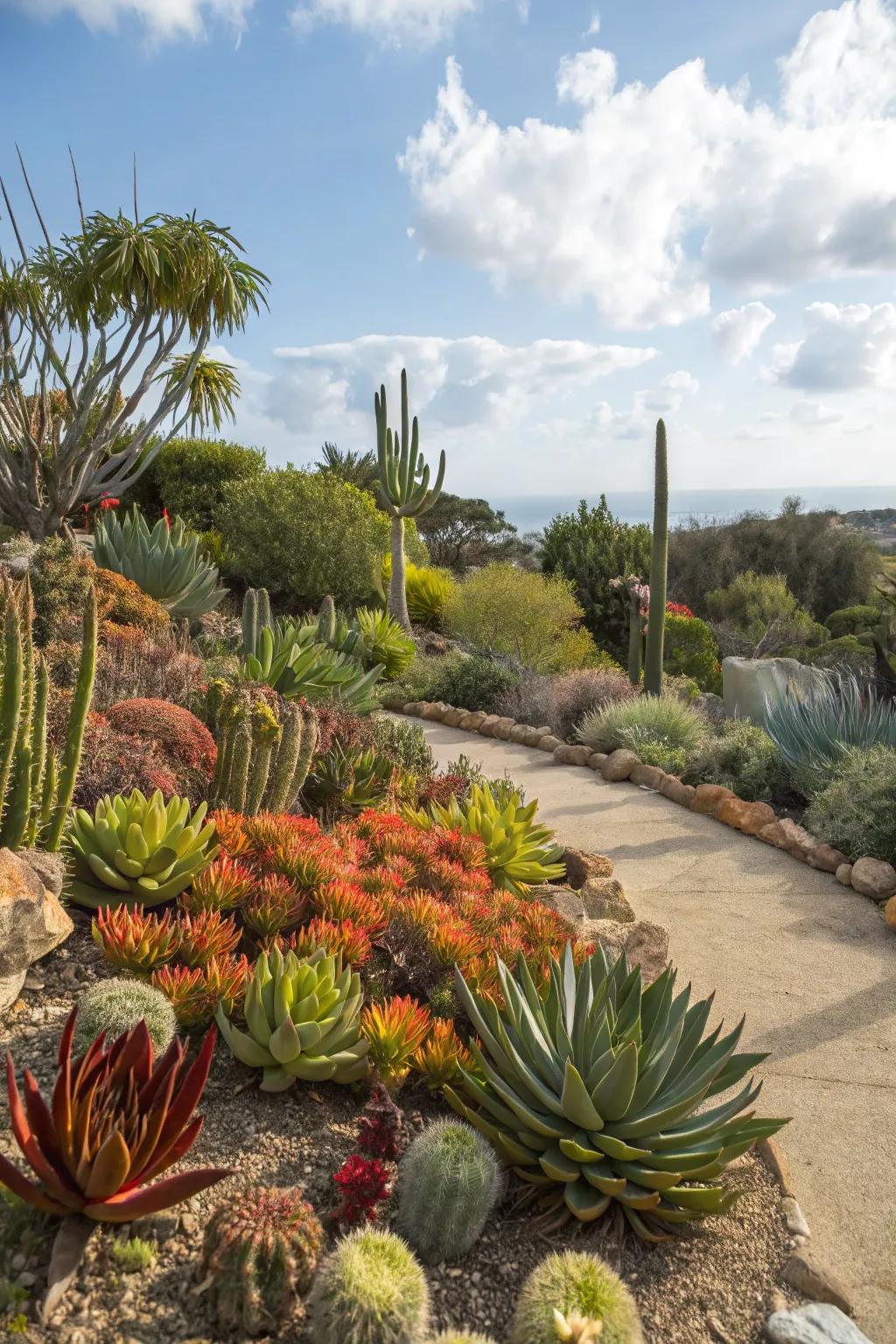
Create a low-maintenance, water-wise area with succulents and cacti for pops of color without the thorns. My succulent garden thrives with minimal care, making it a favorite spot for relaxation.
Useful items to consider:
- Assorted Succulent Plant Collection: Add vibrant variety to your garden with easy-to-care succulent collections. Perfect for any space.
- Cactus and Succulent Soil Mix: Ensure optimal drainage and growth with this specially formulated soil mix for succulents and cacti.
- Decorative Pebbles for Succulent Gardens: Enhance your garden’s aesthetics with decorative pebbles, ideal for xeriscaping and plant health.
6. Accent with Garden Sculptures
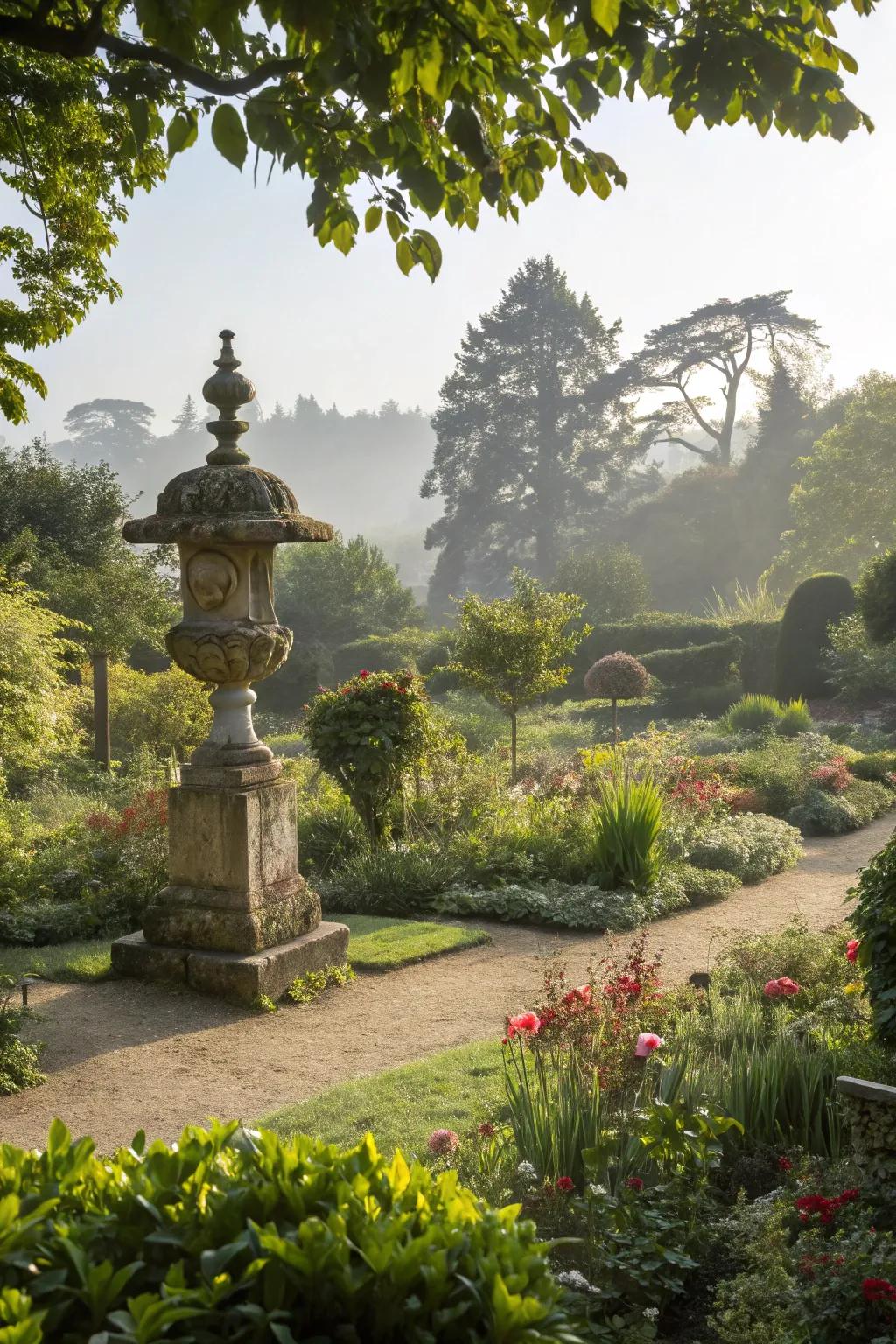
Add personality to your garden with sculptures or bird baths nestled among your plants. In my garden, a stone sculpture serves as a focal point, drawing eyes from all corners.
These products might be useful:
- Stone Garden Sculpture: Enhance your garden’s elegance with a classic stone sculpture, creating a timeless focal point.
- Decorative Bird Bath: Invite nature into your garden with a beautiful bird bath, adding charm and life to your space.
- Metal Garden Art: Add a modern touch with metal garden art, providing a striking contrast in lush greenery.
7. Create a Patio Oasis
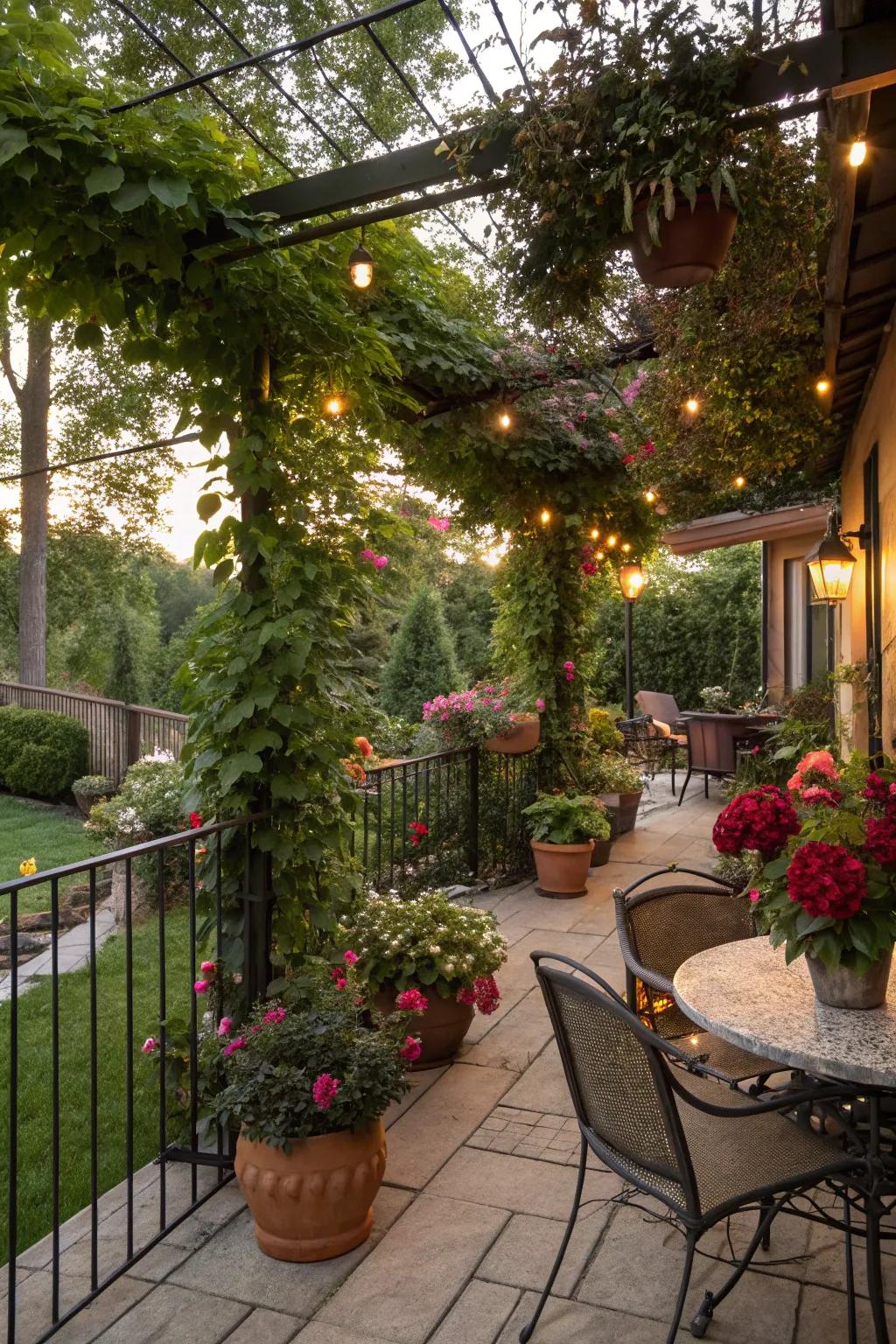
Turn your patio into a green retreat with potted plants and climbing vines. On my porch, a mix of planters and hanging baskets creates a cozy, inviting atmosphere.
Some ideas to consider:
- Decorative Hanging Planters: Enhance your patio with stylish hanging planters perfect for showcasing vibrant flowers and greenery.
- Outdoor String Lights: Add a warm glow to your patio with outdoor string lights, perfect for evening gatherings.
- Climbing Vine Trellis: Support your climbing vines beautifully with a sturdy trellis that adds charm and height.
8. Add Cozy Seating Nooks
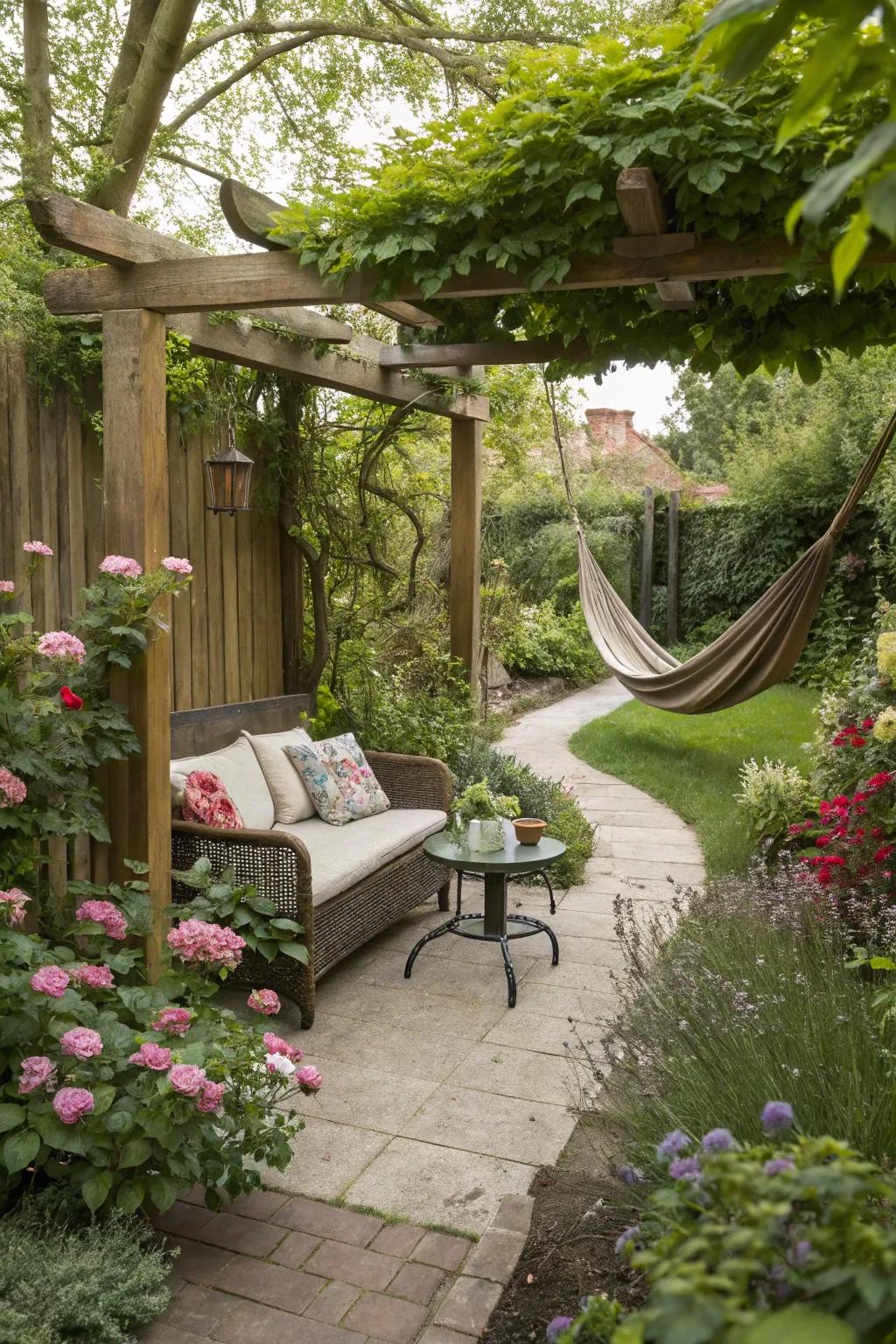
Create inviting spots with benches or hammocks nestled among your plants for relaxation. I’ve got a hammock under my favorite oak tree, making it the perfect spot to unwind.
A few choices to try:
- Outdoor Garden Hammock: Relax effortlessly with a durable hammock, perfect for your garden under a shady tree.
- Wicker Patio Sofa Set: Enhance your garden with a cozy wicker sofa set, ideal for comfortable outdoor lounging.
- Garden Side Table: Conveniently hold your drinks and books with a stylish garden side table next to your seat.
9. Embrace Evergreens for Year-Round Beauty
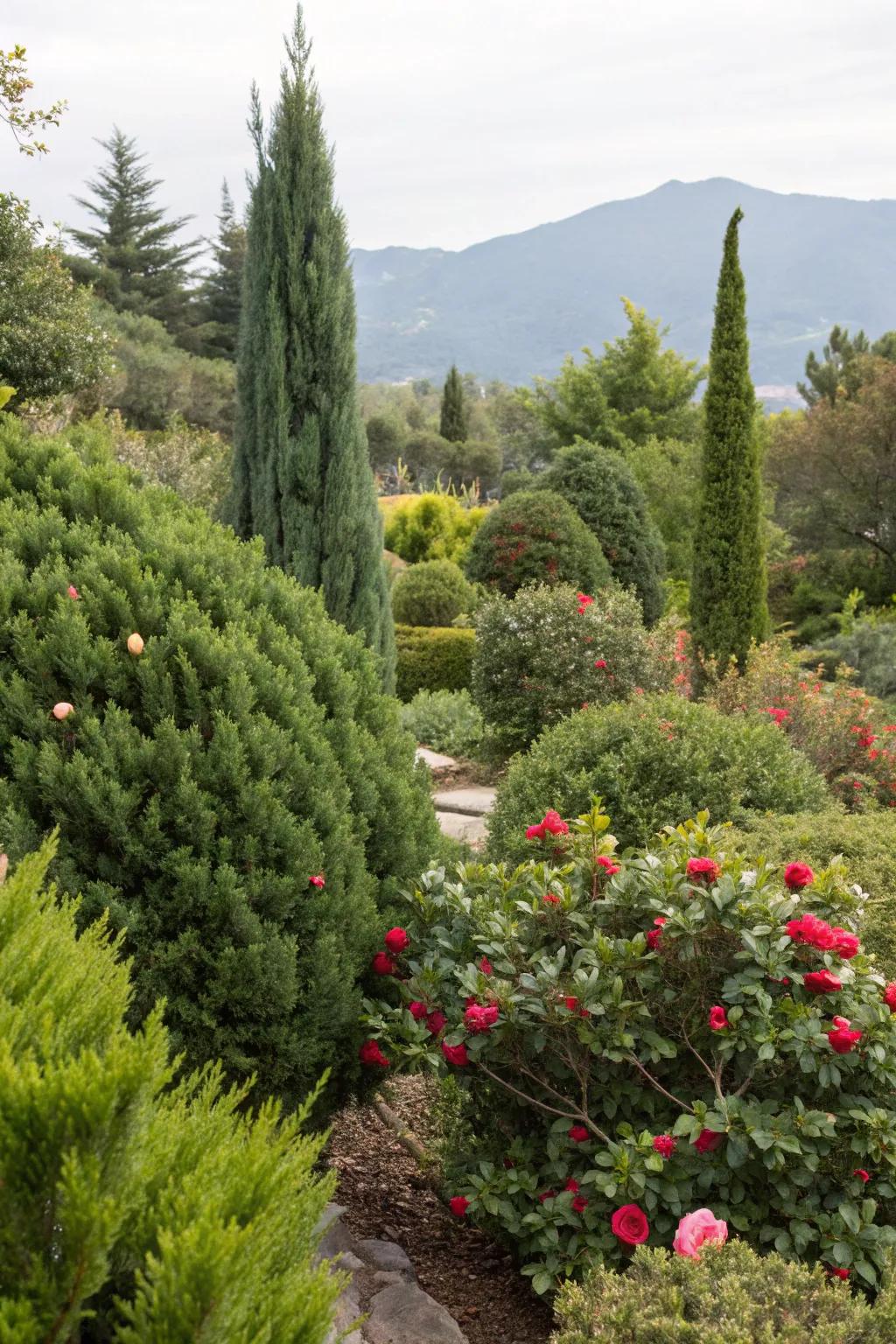
Evergreens like junipers and camellias are your best friends in zone 7, keeping your garden vibrant even in the chill of winter. In my own garden, the evergreen rhododendrons provide lush greenery that never fades.
Products that could assist:
- Juniper Plant Seeds: Grow lush junipers for an evergreen touch that thrives through all seasons.
- Camellia Shrub Starter Plant: Plant camellias for beautiful greenery and vibrant blooms even in winter months.
- Rhododendron Bushes: Add rhododendron bushes for enduring greenery and seasonal flower bursts.
10. Create a Shade Garden
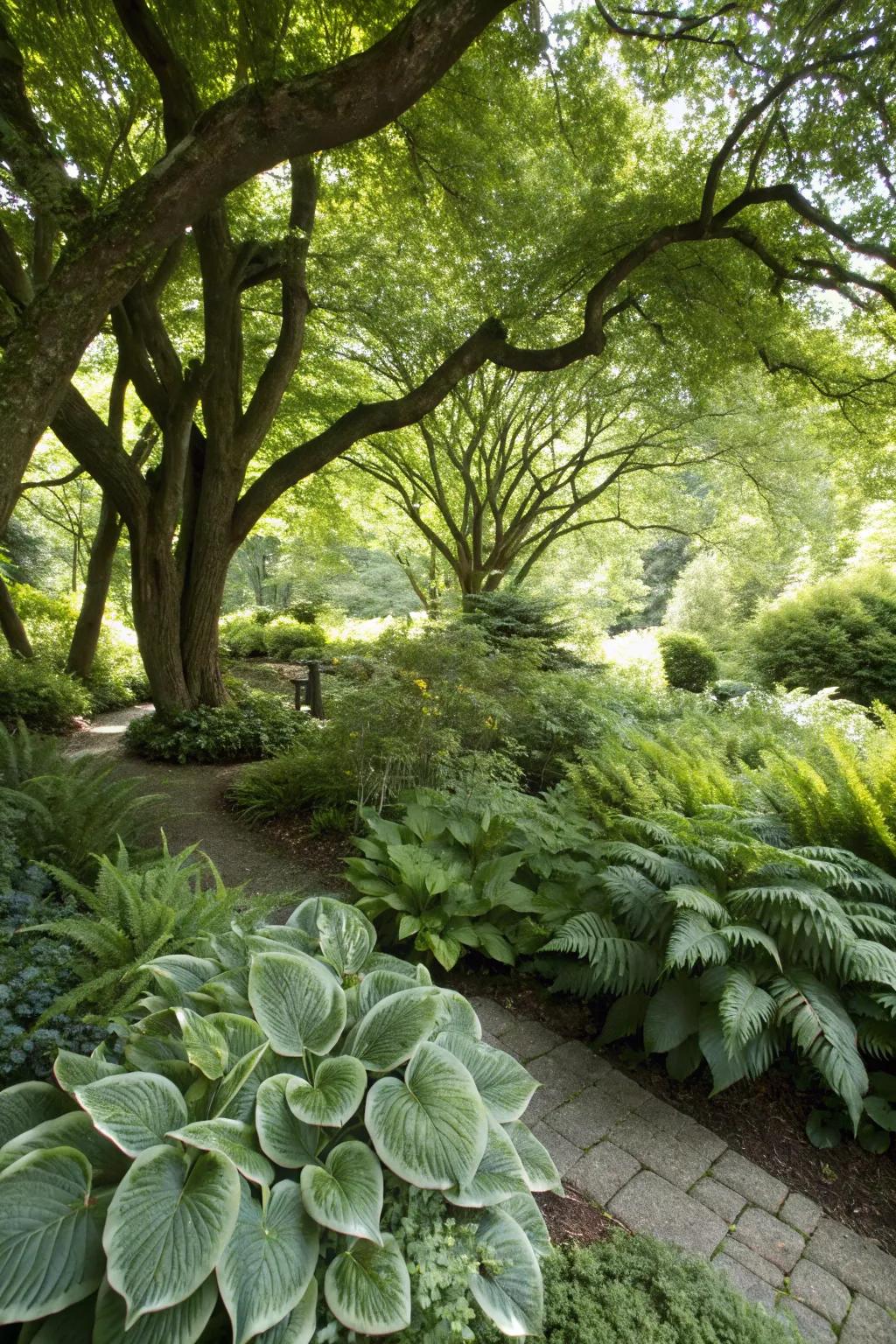
Utilize shaded areas with shade-loving plants like hostas and ferns for lush greenery. My shaded corner thrives with a variety of textures and deep greens.
You might give these a try:
- Shade-Loving Plant Seed Mix: Enhance your shade garden with a variety of stunning shade-loving plant seeds. Start growing today!
- Garden Soil for Shade Plants: Boost plant growth by using nutrient-rich soil specifically formulated for shade-loving plants.
- Decorative Garden Pathway Stones: Create beautiful garden paths with durable and weather-resistant decorative stones. Enhance your outdoor space!
11. Use Decorative Stones
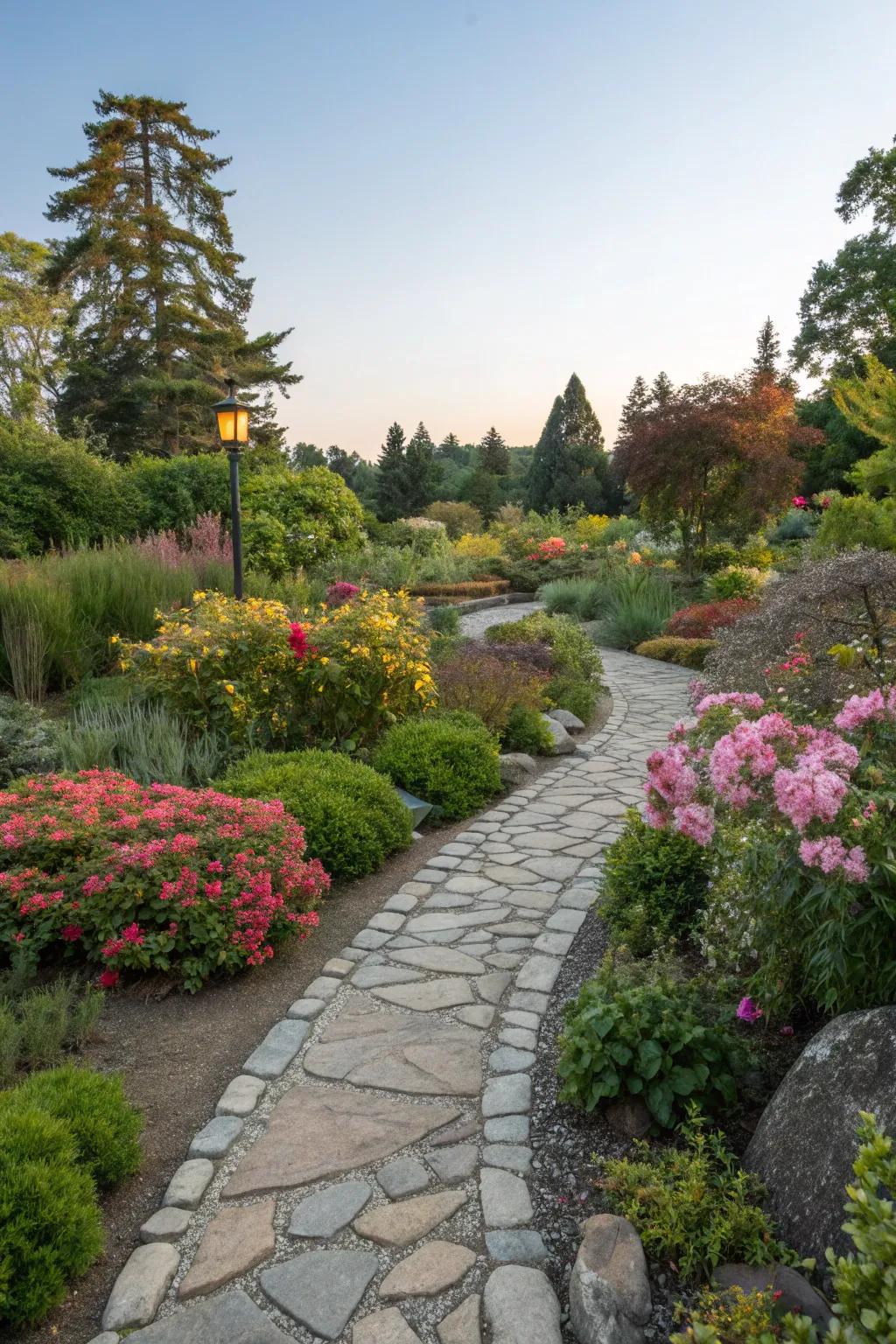
Enhance pathways or borders with decorative stones for a polished look. I’ve lined my garden paths with smooth river stones, providing a clean and natural finish.
Check if these fit your needs:
- Smooth River Stones: Transform your garden paths with smooth river stones for a natural, elegant finish.
- Decorative Garden Pebbles: Enhance your landscape borders with decorative pebbles, adding texture and style to your garden.
- Mixed Natural Stone Variety Pack: Explore diverse colors and textures with a mixed stone pack for dynamic garden designs.
12. Experiment with Vertical Gardens
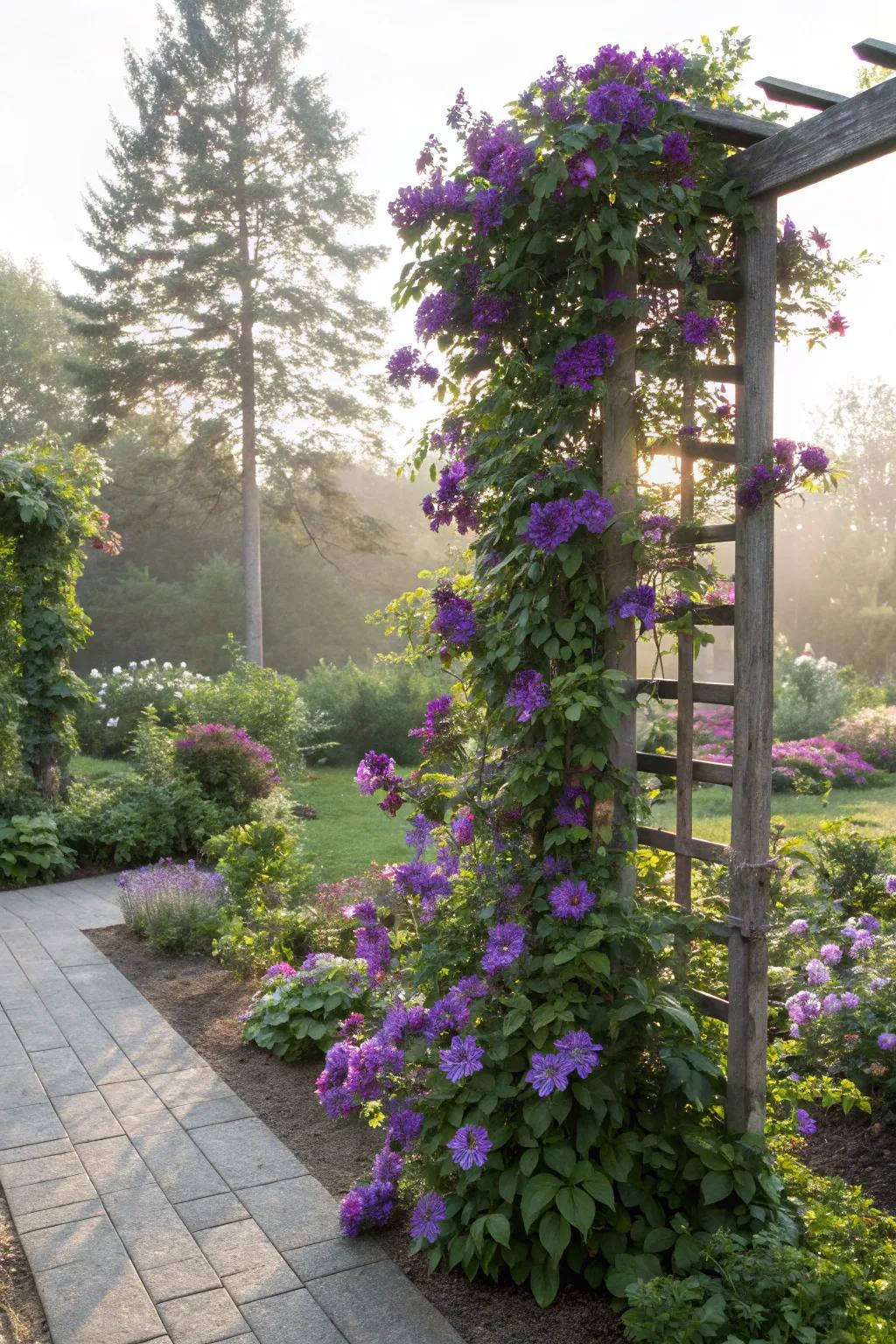
Try vertical gardening with climbing plants on trellises to maximize space and add height. In my garden, a trellis covered in clematis creates a living wall of blooms.
Try these:
- Wooden Garden Trellis: Enhance your garden with a sturdy trellis, perfect for supporting climbing plants like clematis.
- Clematis Climbing Seeds: Grow a beautiful wall of blooms with these clematis seeds designed for vertical gardens.
- Vertical Garden Planter Kit: Maximize your space with an easy-to-install vertical planter kit for a lush garden display.
13. Use Contrasting Textures
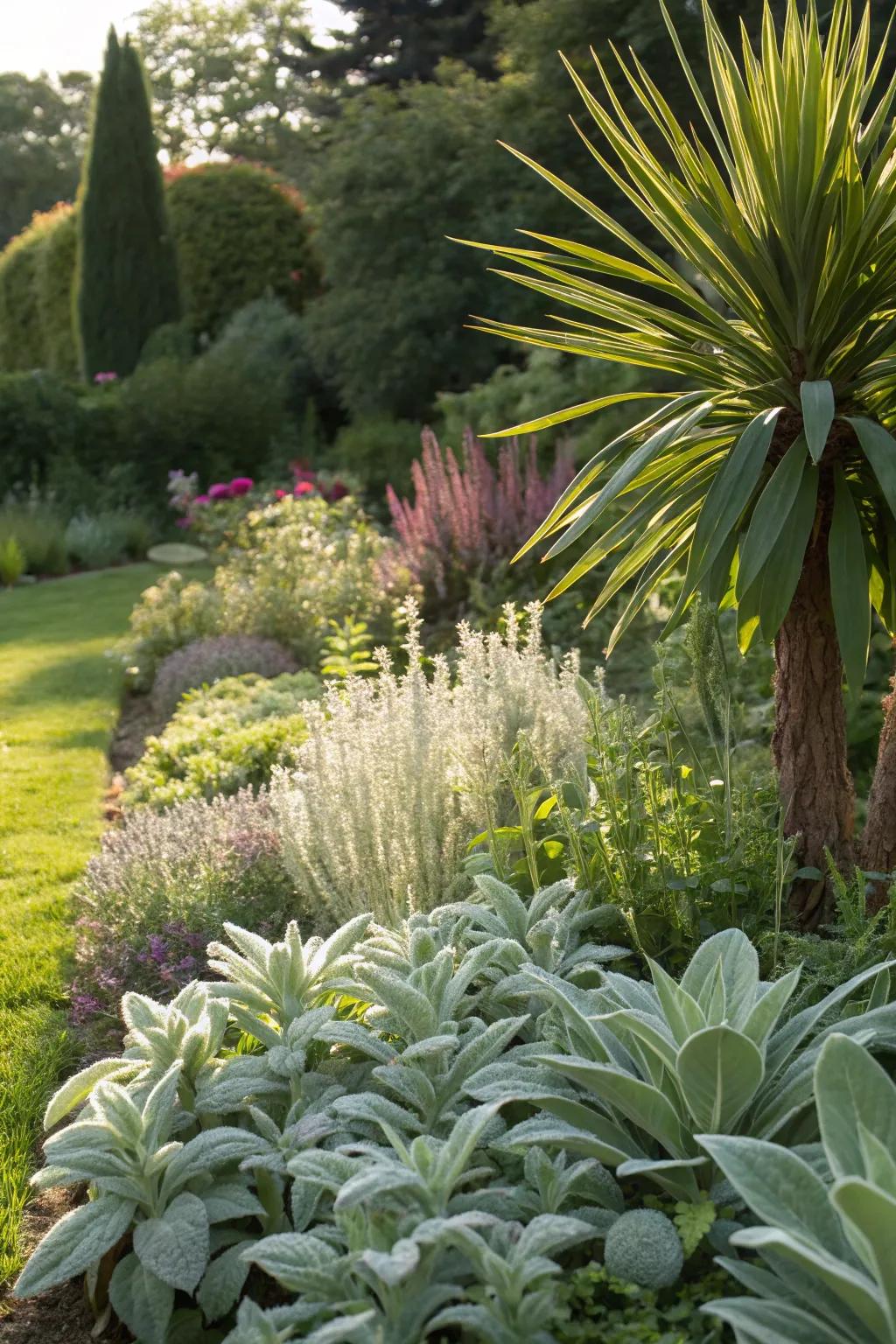
Mixing plants with different textures, such as fuzzy lamb’s ear and spiky yucca, adds visual intrigue. In my yard, this contrast catches the eye and keeps the landscape visually dynamic.
Maybe worth checking out:
- Decorative Garden Mulch: Enhance your landscape’s texture by adding decorative mulch for added depth and color contrast.
- Garden Spade for Planting: Easily plant varying textures with this versatile garden spade, ideal for all your landscaping needs.
- Outdoor Plant Fertilizer: Boost plant health and texture with this premium fertilizer, enhancing garden vibrancy effortlessly.
14. Incorporate Raised Beds
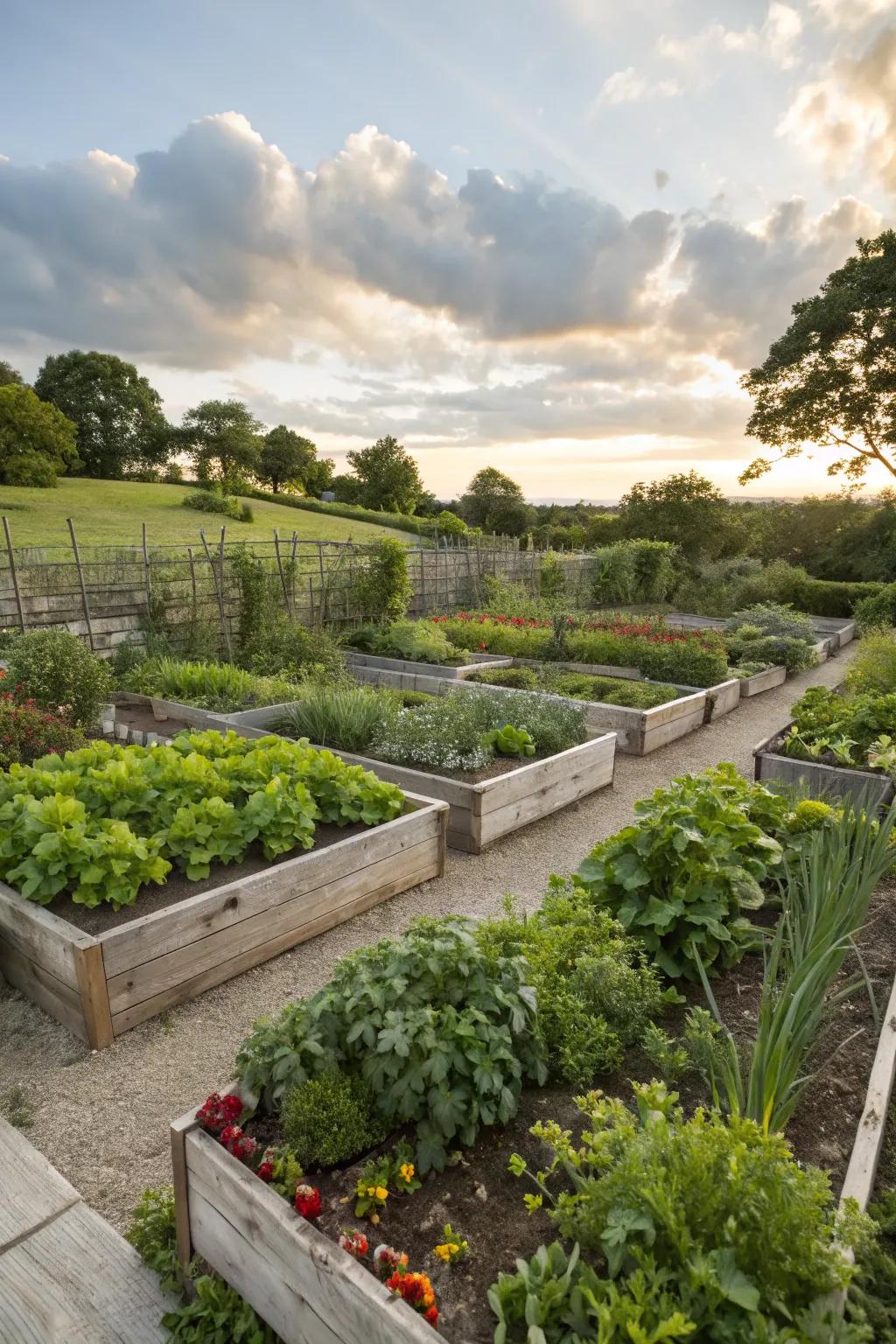
Use raised beds to improve drainage and add structure to your garden. My raised herb garden not only looks neat but also makes harvesting a breeze.
Might be a good match:
- Wooden Raised Garden Bed Kit: Create organized garden spaces with this sturdy wooden kit to enhance drainage and aesthetics.
- Gardening Soil Mix for Raised Beds: Boost your plants’ growth with soil mix designed for superior drainage and nutrient retention.
- Herb Garden Labels Set: Keep your herbs correctly identified with this weather-resistant labels set for outdoor use.
15. Create a Pollinator Paradise
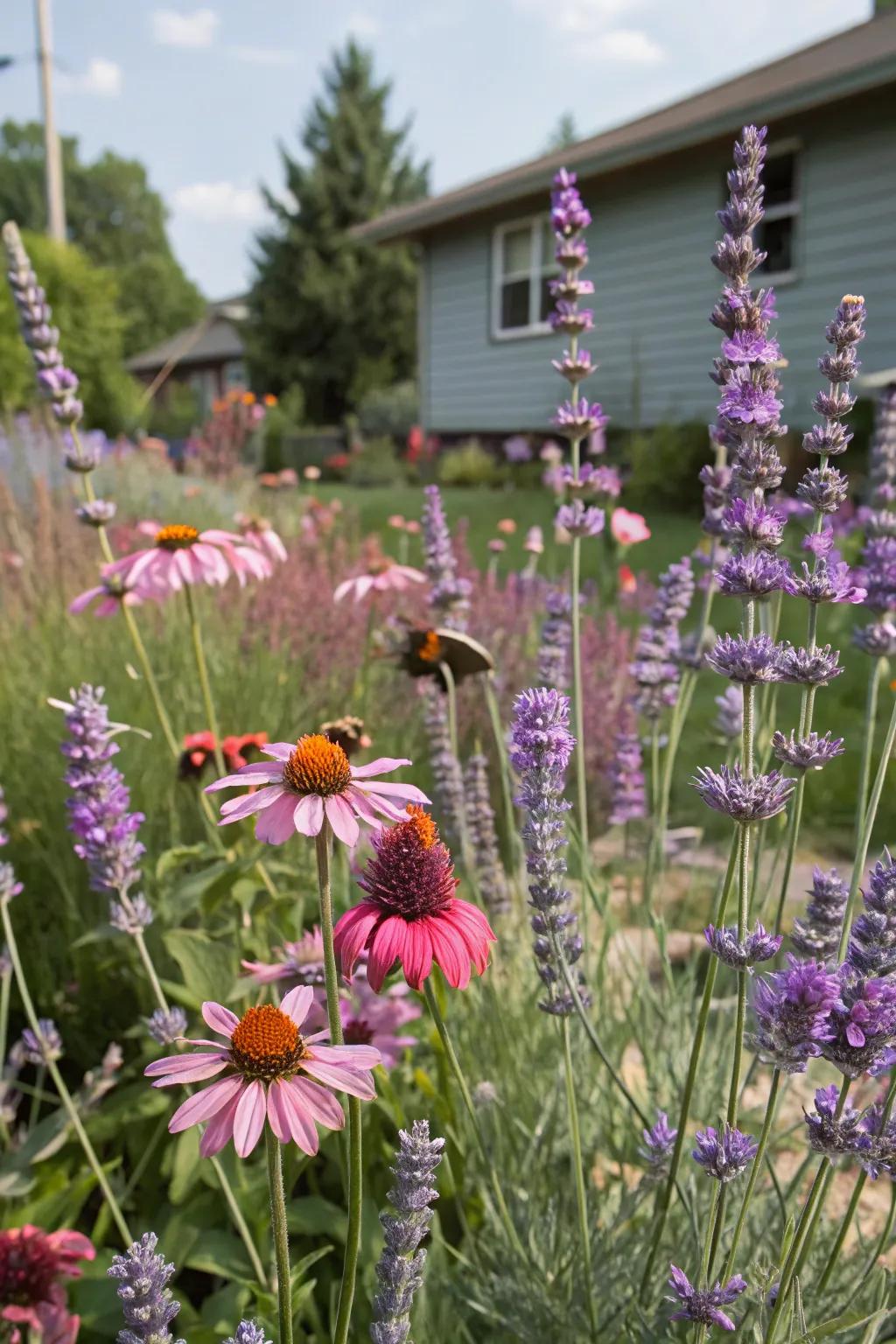
Transform part of your lawn into a pollinator’s haven with lavender and coneflowers to attract bees and butterflies. In my backyard, these blooms create a lively buzz all summer long.
Some handy options:
- Lavender Seeds or Seedlings: Plant lavender to attract pollinators and enhance your garden with delightful fragrance.
- Coneflower (Echinacea) Seeds or Plants: Grow coneflowers to draw in butterflies and add vibrant color to your garden.
- Pollinator-Friendly Garden Soil: Use enriched garden soil to boost plant growth and create an inviting environment for pollinators.
16. Integrate Edible Plants
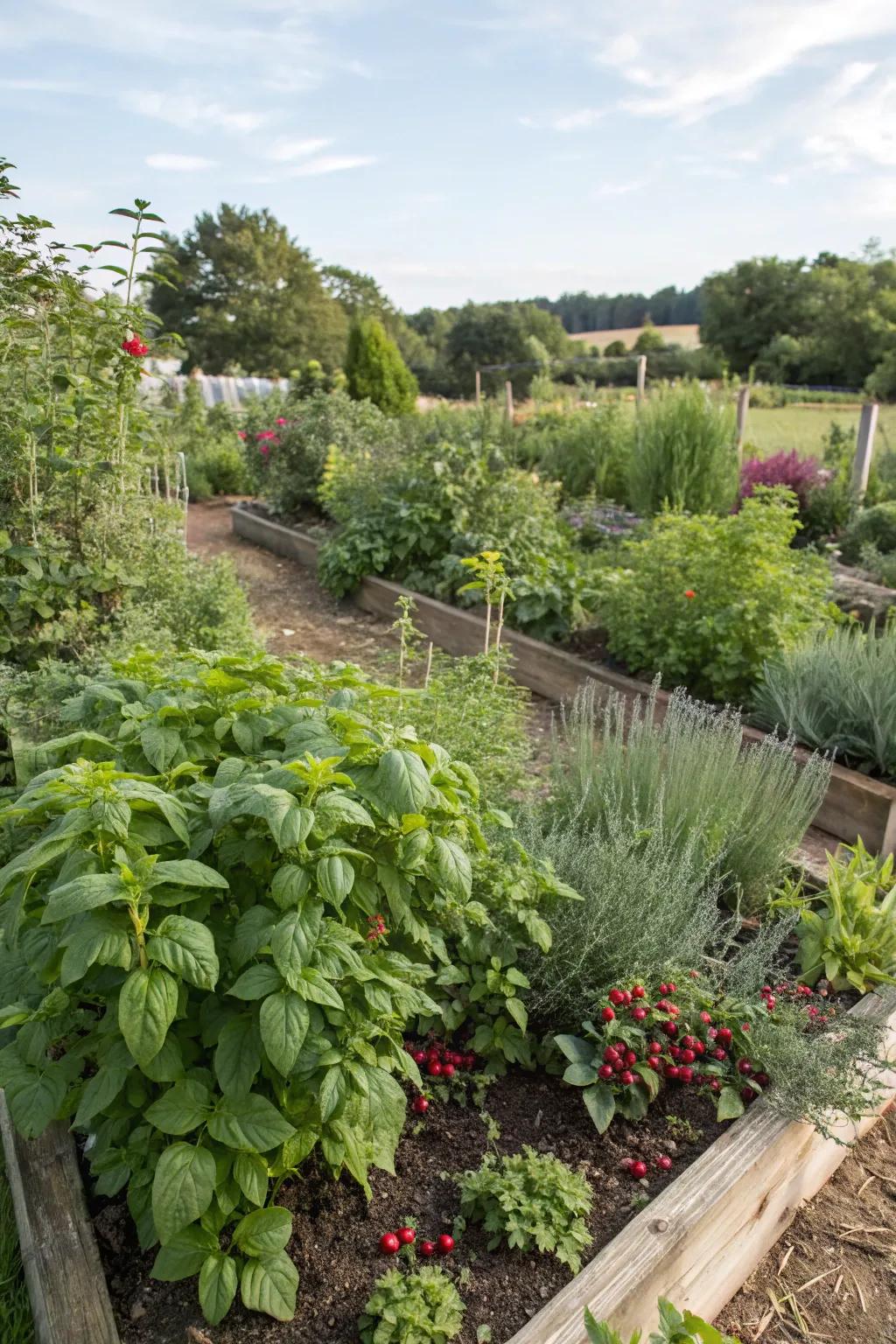
Blend beauty and functionality by incorporating edible plants like herbs and berries into your landscape. In my garden, fresh basil and strawberries are just a step away, adding flavor to our meals.
Possibly helpful picks:
- Raised Garden Bed Kit: Enhance your garden with an easy-to-assemble raised bed, perfect for growing herbs and berries.
- Herb and Berry Seeds Variety Pack: Start your edible garden with a variety pack of seeds including basil and strawberry.
- Organic Fertilizer for Edible Plants: Boost your plant growth using this organic fertilizer formulated for herbs and fruit-bearing plants.
17. Create a Wildflower Meadow
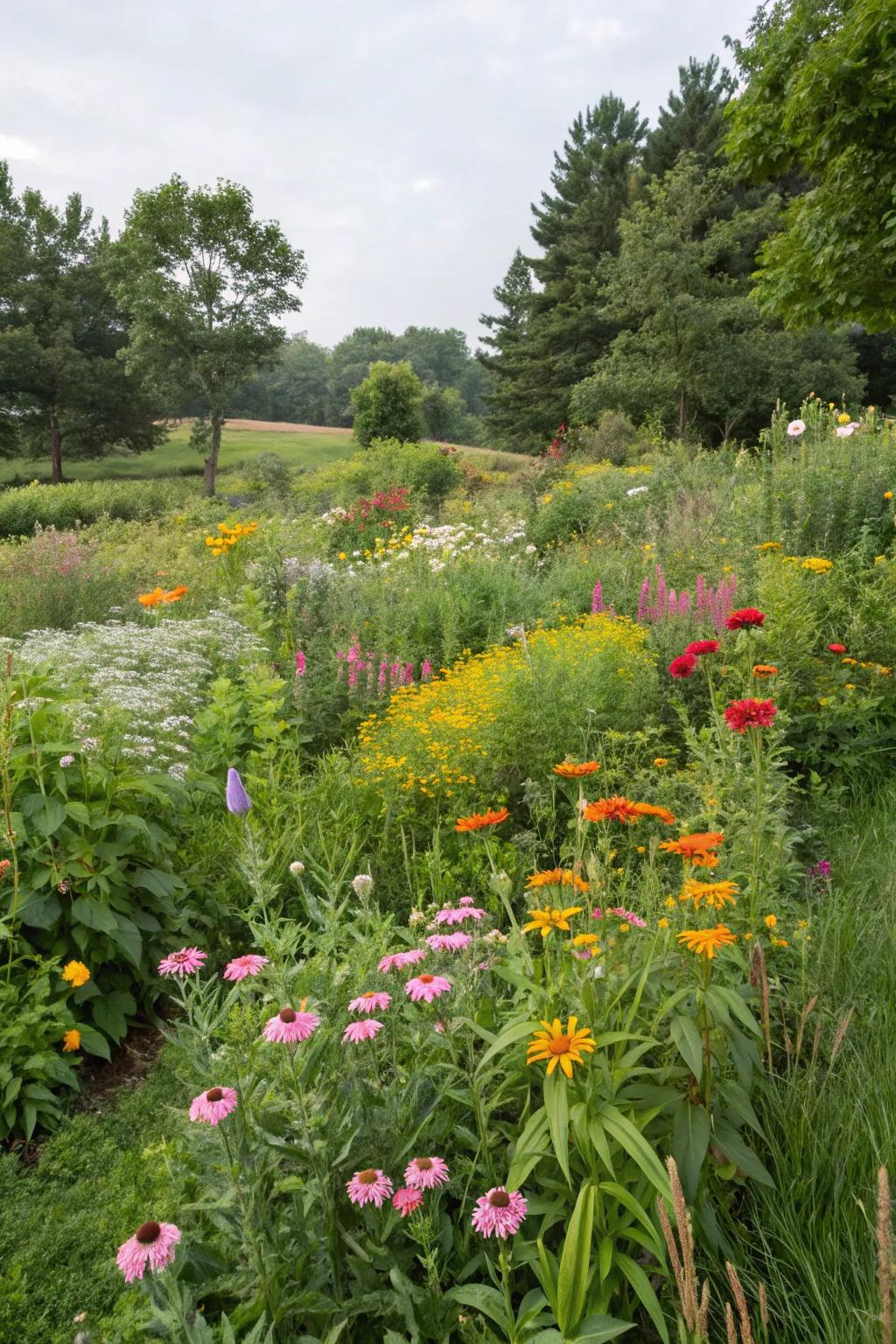
Convert part of your lawn into a wildflower meadow to boost biodiversity and add a natural look. In my garden, this area blooms with color and attracts all sorts of beneficial insects.
Give these a look:
- Wildflower Seed Mix: Transform your lawn with vibrant wildflowers and attract beneficial pollinators effortlessly.
- Garden Soil Enhancer: Boost your soil’s fertility naturally to support a thriving wildflower meadow.
- Pollinator Hotel: Encourage bees and butterflies to visit your meadow with this charming pollinator hotel.
18. Incorporate Four-Season Interest Plants

Plants like dogwoods and river birch offer colorful bark and berries, adding interest throughout all seasons. I love how my coral bark maple brightens up the winter landscape with its striking red branches.
A few suggestions:
- Coral Bark Maple Tree: Enhance your winter landscape with the vivid red branches of a coral bark maple tree.
- Dogwood Tree: Add seasonal color with a dogwood tree, offering stunning flowers and vibrant fall foliage.
- River Birch Tree: Introduce year-round interest with a river birch tree, known for its lovely exfoliating bark.

